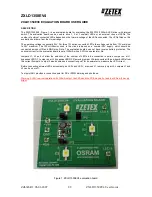
- 26 -
Hardware Installation
Pin No.
Definition
1
Power
2
GND
Onboard Voltage Measurement Module
Use a multimeter to measure the following motherboard voltages. You can employ one of the following two
ways to measure component voltages.
F_USB30
F_U
B_
F_
F_
_ B
BS_ B
SB_ B
_S
S_ _ B
_U _ B
S
12
3
12
3
1 2 3
12
3
1
1
1
1
BSS
S
_S
SSU
1
2
3
4
5
S3
BSSS
U
__
3
F_USB3F
S
_
S
_
SF
VDIMM
Pin 1
VSA
F_USB30
F_U
B_
F_
F_
_ B
BS_ B
SB_ B
_S
S_ _ B
_U _ B
S
12
3
12
3
1 2 3
12
3
1
1
1
1
BSS
S
_S
SSU
1
2
3
4
5
S3
BSSS
U
__
3
F_USB3F
S
_
S
_
SF
Pin 1
DDRVTT
F_USB30
F_U
B_
F_
F_
_ B
BS_ B
SB_ B
_S
S_ _ B
_U _ B
S
12
3
12
3
1 2 3
12
3
1
1
1
1
BSS
S
_S
SSU
1
2
3
4
5
S3
BSSS
U
__
3
F_USB3F
S
_
S
_
SF
Pin 1
F_USB30
F_U
B_
F_
F_
_ B
BS_ B
SB_ B
_S
S_ _ B
_U _ B
S
12
3
12
3
1 2 3
12
3
1
1
1
1
BSS
S
_S
SSU
1
2
3
4
5
S3
BSSS
U
__
3
F_USB3F
S
_
S
_
SF
Pin 1
PCHIO
F_USB30
F_U
B_
F_
F_
_ B
BS_ B
SB_ B
_S
S_ _ B
_U _ B
S
12
3
12
3
1 2 3
12
3
1
1
1
1
BSS
S
_S
SSU
1
2
3
4
5
S3
BSSS
U
__
3
F_USB3F
S
_
S
_
SF
Pin 1
VAXG
F_USB30
F_U
B_
F_
F_
_ B
BS_ B
SB_ B
_S
S_ _ B
_U _ B
S
12
3
12
3
1 2 3
12
3
1
1
1
1
BSS
S
_S
SSU
1
2
3
4
5
S3
BSSS
U
__
3
F_USB3F
S
_
S
_
SF
Pin 1
VPP_25V
F_USB30
F_U
B_
F_
F_
_ B
BS_ B
SB_ B
_S
S_ _ B
_U _ B
S
12
3
12
3
1 2 3
12
3
1
1
1
1
BSS
S
_S
SSU
1
2
3
4
5
S3
BSSS
U
__
3
F_USB3F
S
_
S
_
SF
Pin 1
F_USB30
F_U
B_
F_
F_
_ B
BS_ B
SB_ B
_S
S_ _ B
_U _ B
S
12
3
12
3
1 2 3
12
3
1
1
1
1
BSS
S
_S
SSU
1
2
3
4
5
S3
BSSS
U
__
3
F_USB3F
S
_
S
_
SF
VCORE
Pin 1
VCCIO
F_USB30
F_U
B_
F_
F_
_ B
BS_ B
SB_ B
_S
S_ _ B
_U _ B
S
12
3
12
3
1 2 3
12
3
1
1
1
1
BSS
S
_S
SSU
1
2
3
4
5
S3
BSSS
U
__
3
F_USB3F
S
_
S
_
SF
Pin 1
Method I (Using the included voltage measurement cable):
Method II (Connecting the multimeter directly):
Steps:
Connect the included voltage measurement cable to a voltage mea-
surement header and your multimeter as shown. Please note the
red wire is the positive and must be connected to the pin 1 (Power).
Steps:
Connect the red lead of the multimeter to the pin 1 (Power) of a
voltage measurement point and the black lead to the pin 2 (ground).
OC Trigger switch (TGR):
This switch allows the overclockers to jump between low and extremely high frequencies in an instant. After remaining at a
low frequency during system boot and OS optimization, the overclocker can then engage the Trigger Switch to instantly hit
the target frequency, save their score submission, grab a screen shot, and watch the records tumble.
2: Safe frequency (using the lowest CPU ratio, which may vary by CPU)
1: Target frequency set in BIOS Setup or other overclocking application.
1
2
F_USB30
F_U
B_
F_
F_
_
B
BS_
B
SB_
B
_
S
S_
_
B
_U
_
B
S
12
3
1 2 3
12
3
12
3
1
1
1
1
BS
S
S
_S
S
S
U
1 2 3 4 5
S
3
BS
S
S
U
_
_
3
F_USB3F
S
_
S
_
S
F
1
2
F_USB30
F_U
B_
F_
F_
_
B
BS_
B
SB_
B
_
S
S_
_
B
_U
_
B
S
12
3
1 2 3
12
3
12
3
1
1
1
1
BS
S
S
_S
S
S
U
1 2 3 4 5
S
3
BS
S
S
U
_
_
3
F_USB3F
S
_
S
_
S
F
Before using the overclocking buttons, make sure to load the optimized defaults in BIOS Setup to return
the BIOS settings to factory defaults.
VCCPLL
Summary of Contents for GA-Z170X-SOC Force
Page 2: ...Motherboard GA Z170X SOC Force Sept 18 2015 Sept 18 2015 Motherboard GA Z170X SOC Force ...
Page 8: ... 8 ...
Page 114: ...Unique Features 114 ...
Page 130: ...Appendix 130 ...















































